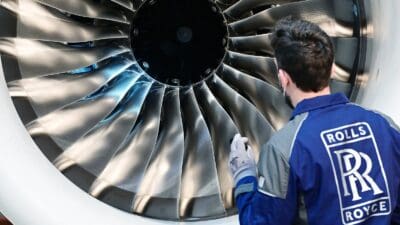Interim results from Mulberry Group (LSE: MUL) this morning have failed to impress the market — and I’m not surprised. The company reported a 17% fall in first-half revenue to £64.7m and a £1.1m pre-tax loss, which was driven by £2.8m of new store opening costs and lower profit margins.
It’s clear that after spending heavily on new stores, Mulberry still has a lot to prove, despite a promising 8% rise in retail sales over the last nine weeks.
In contrast, Mulberry’s larger peer Burberry Group (LSE: BRBY) reported a 14% rise in revenue during the same six month period, and with rising net cash on its balance sheet, was also able to announce a 10% interim dividend increase.
Should you invest £1,000 in Harbour Energy Plc right now?
When investing expert Mark Rogers has a stock tip, it can pay to listen. After all, the flagship Motley Fool Share Advisor newsletter he has run for nearly a decade has provided thousands of paying members with top stock recommendations from the UK and US markets. And right now, Mark thinks there are 6 standout stocks that investors should consider buying. Want to see if Harbour Energy Plc made the list?
Growth investors might say that smaller Mulberry offers more recovery and growth potential than Burberry, but I’m not sure this claim adds up.
Trading on past glories?
Mulberry shares currently trade on a sky-high 2015/16 forecast P/E of 113. The firm’s prospective dividend yield is similarly unappealing, at 0.5%.
Buying a share trading at this kind of valuation is always going to be risky: in my view Mulberry’s share price still reflects the past glories of 2012, when the firm hit peak earnings per share of 43p. Unfortunately, repeating this would require a 500% increasein next year’s forecast earnings of 6.8p per share.
Even if Mulberry’s earnings do make it back to 2012 levels in a few years’ time, today’s share price would still equate to a P/E of 18 — hardly a bargain.
What’s more, I very much doubt Mulberry’s sales growth will make up for the collapse in its operating profit margin, which has fallen from a peak of 21% in 2012 down to 8.4% — more in-line with its historic average.
Burberry may be better
In contrast, Burberry trades on a typical growth P/E of 20, based on next year’s forecast for earnings of 84p per share. The firm’s attraction also extends to a 2.3% prospective yield for 2015/16.
Burberry products also deliver more consistent profits — the firm’s operating margin has stayed firm between 17% and 20% since 2010.
On the other hand, Burberry’s shares are currently at an all-time high, so a disappointing Christmas could knock the share price. However, despite this risk, Burberry would be my pick of these firms, as I think it is more likely to deliver positive returns over the next couple of years.







